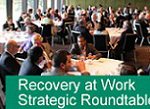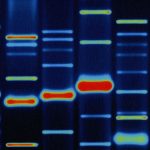People, get ready

The future thinking that Australia needs to meet the increasing severity, length and frequency of natural hazards is outlined in a new report by Natural Hazards Research Australia.
Be Ahead of Ready draws on the best thinking from across Australia to outline the transformative research and actions required to enable Australia to be prepared for future natural hazard risks and challenges.
Natural Hazards Research Australia CEO Andrew Gissing believes a shift in thinking to focus on the longer-term is required to ensure Australia is prepared and equipped to meet future natural hazards head on.
“Australia needs to be ahead of the curve, where risks are foreseen and proactive measures are taken to reduce or adapt to threats. We must break the cycle of simply preparing for the next hazard by looking back at hazards of the past,” Mr Gissing says.
“Doing more of the same is no longer enough – small step changes will not get us to where we need to be to meet the threat of more severe and frequent natural hazards. As natural hazard threats evolve, we must transform to be ahead of ready.
“To do this, we must all think bigger and bolder and embrace diverse ideas. We must be creative and innovative, visionary and strategic. Too often change is reactive in the aftermath of disasters and incremental in its advancement. We need to switch to a transformative, more ambitious model of change.
“Climate change is increasing Australia’s natural hazard threat so we must ask: what do we want as our long-term vision for our communities?” Mr Gissing says.
Be Ahead of Ready is the culmination of the ideas from more than 300 creative thinkers from inside and outside emergency management. Each were asked to think outside of their sector and comfort zones to identify the big ideas to change the future. While many ideas involve advances in technology, artificial intelligence and predictive modelling, all need the human element to shape, drive and implement change.
The ideas highlighted in the report include better and faster decisions, using artificial intelligence and sensing to enhance the real time forecasting, identification and triaging of people and properties at greatest risk, as well as automatically tasking assets to provide lifesaving warning and assistance with minimal human intervention.
Personalised warnings and engagement, using digital twins, augmented reality and digital footprints could tailor messages to an individuals’ situation and needs, prompting stronger action.
Resilient infrastructure and utilities, with advanced monitoring systems that pre-empt potential failures, are also required including inbuilt sensors monitoring the strength of bridges and buildings and taking advantage of decentralised power generation and microgrids to ensure blackouts are minimised.
Resilient homes and communities can be created with a national plan that sets a clear and consistent direction for land use planning, urban design and construction that will withstand future hazards and increase living and community wellbeing standards.
Workforce capability can be improved by adopting a broader approach that increases the diversity of people and sectors involved, including businesses and not-for-profits, and make better use of First Nations knowledge and practices.
Investment decisions informed by the triple bottom line can radically transform our understanding of the true cost of disasters and the community and financial benefits of mitigation, as well as empowering decision makers to pinpoint and advocate for investments with evidence-based clarity.
The dynamic measurement of risk and resilience, such as a continuous whole-of-country measurement of hazard risk and resilience can track the latest environmental changes, socio-ecological developments and technology advancements to better inform decision making.
Finally, public-private partnerships can deliver innovation to the finance system and society to catapult Australian emergency management into a new era of innovation.
Be Ahead of Ready is the start of a national conversation and move to research-driven planning that will drive a resilient, safe and sustainable Australia in the face of future natural hazards. The report is designed to prompt thought and discussion on what we need to act on now to ensure Australia is ahead of ready and how research will support this process. The ideas outlined are not exhaustive, with broad sector, partner and community input, collaboration and change at the heart of the report, with more to come.
“The need is urgent. The time to act is now. Change will not be without challenges. Our future needs us to develop a diversity of skills, expertise, and ideas,” Mr Gissing said.
Download Be Ahead of Ready here.
Open Forum is a policy discussion website produced by Global Access Partners – Australia’s Institute for Active Policy. We welcome contributions and invite you to submit a blog to the editor and follow us on Facebook, Linkedin and Mastadon.














